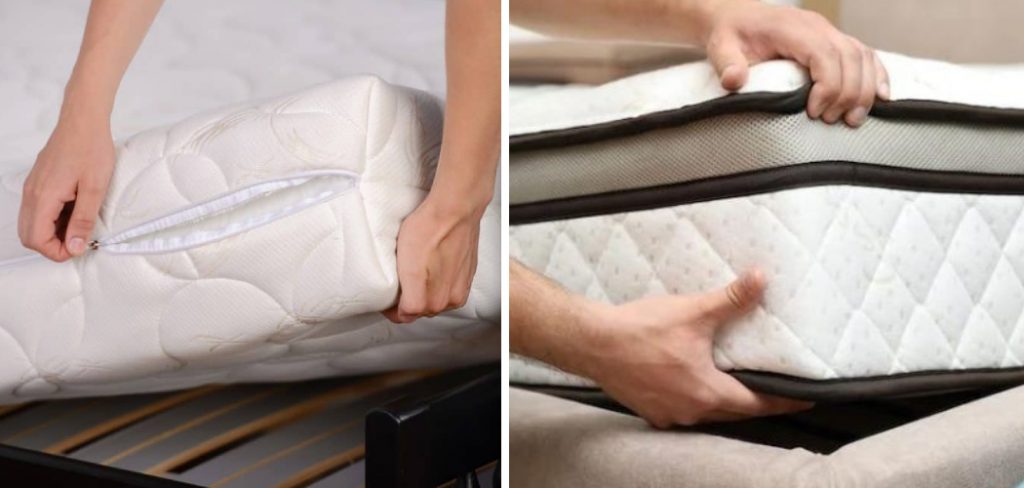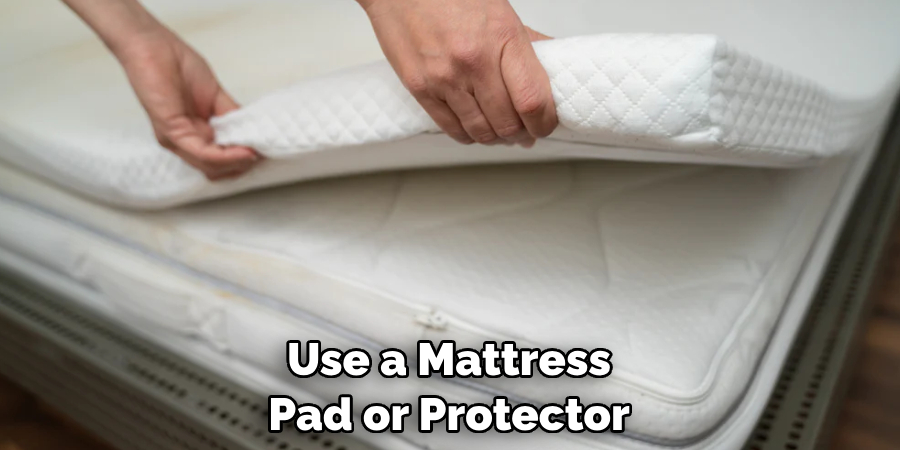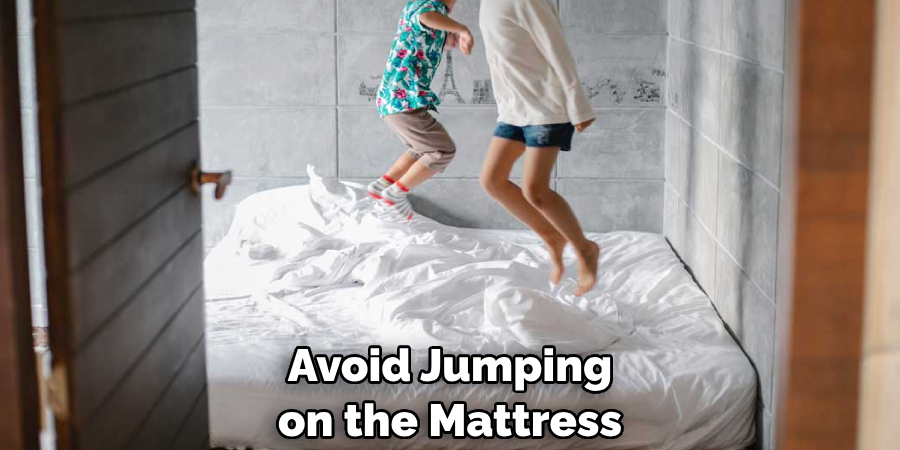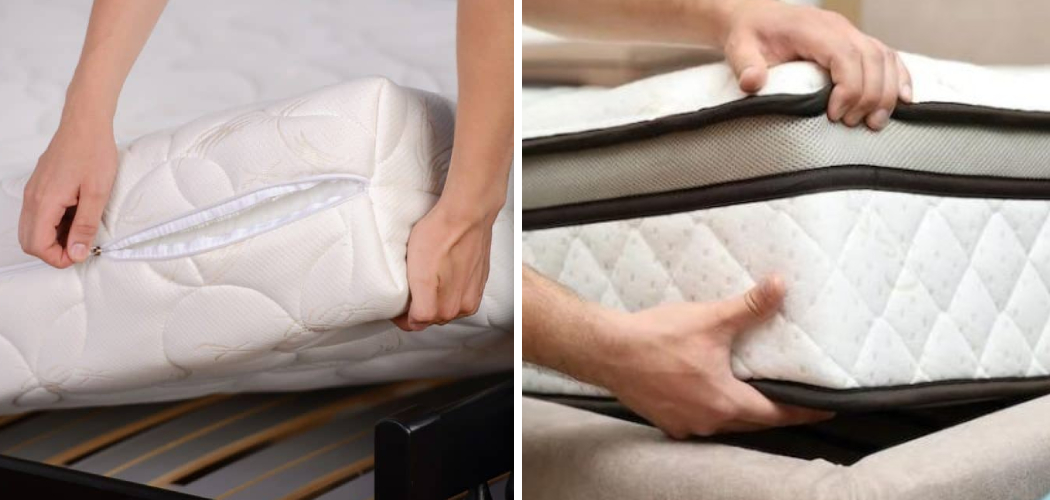Are you noticing indentations in the mattress when you wake up? It’s no longer providing enough support, and it’s a sign that your mattress is starting to wear out.
With years of frequent use, all mattresses will eventually need replacing due to indentation, but there are some methods you can try before investing in a new one. That being said, if yours has gone beyond repair or isn’t as comfortable anymore, purchasing a high quality bed with good ergonomics may be just what you need!

In this post, we’re going to share tips on how to fix mattress indentation so that you can get more life out of your current one. Keep reading for more information!
What are the Causes of Mattress Indentation?
There are a few common causes of mattress indentations that could be causing your bed to look and feel less than desirable.
- Limited Rotation: Mattresses should be rotated, flipped, or turned over every six months to distribute body weight evenly. When it’s not done, the mattress can start taking on indentations in certain areas due to heavier body parts being placed in those spots for long periods.
- Insufficient Support: If your mattress isn’t on a supportive base, it won’t be able to disperse pressure properly and will eventually show signs of indentation.
- Heat Buildup: Memory foam mattresses are known to retain body heat, and when it gets too hot, it can cause the mattress material to sag or become indented in certain areas. This is particularly likely if you’re using a mattress protector that doesn’t allow airflow.
What Will You Need?
If you’re trying to fix mattress indentation, you’ll need some materials and tools. Here are a few of the most important things that you should have on hand before getting started:
- Vacuum cleaner or handheld vacuum
- Mattress pad or protector
- Plywood base
- Comforter or bedspread for extra- cushioning
Now that you have all the necessary materials, here are some steps you can take to try and fix your mattress indentations.

10 Easy Steps on How to Fix Mattress Indentation
Step 1. Clean the Mattress:
Start by cleaning the mattress with a vacuum cleaner or handheld vacuum. This will remove any dust, debris, and allergens that could be contributing to the problem. Make sure to pay special attention to the areas where there are indentations.
Step 2. Protect the Mattress:
It’s important to use a mattress pad or protector to prevent further wear and tear. This will help keep dust and allergens away while providing extra cushioning for your bed. Try an allergen-proof mattress protector for added protection.
Step 3. Add a Plywood Base:
A solid foundation can prevent further indentations and correct existing ones. Add a thin sheet of plywood between your mattress and the bed frame to do this. This will provide extra support and help distribute your weight more evenly across the surface of the mattress. It’s also a good idea to ensure that the plywood is the same size as your mattress to avoid any overhang or instability.
Step 4. Use a Mattress Topper:
A mattress topper is a great way to add extra support and cushioning to a bed that has started to show signs of indentation. These toppers come in various materials like memory foam, latex, or wool and can provide the additional comfort you need. Remember to choose a topper that aligns with your sleeping preferences and fits your mattress size correctly.
Step 5. Flip or Rotate Your Mattress:
If your mattress is flippable, turn it over. If it’s one-sided, rotate it 180 degrees. This helps to distribute wear more evenly and can postpone the development of further indentations. Remember ideally, you should do this every six months to maximize the lifespan of your mattress.

Step 6. Apply Even Pressure:
Lay a comforter or bedspread over the mattress and walk evenly over it. This can push out minor indentations and distribute padding evenly. Be careful not to jump or put too much pressure on a single point, which could cause further damage.
Step 7. Use a Mattress Repair Kit:
If your mattress has deep indentations, consider using a mattress repair kit, which can be purchased online. These kits usually contain a special adhesive and patching material. Follow the instructions provided in the kit to patch the indented areas.
Step 8. Consider Professional Help:
If you’ve tried all the steps mentioned and still have persistent mattress indentations, it might be time to call in a professional. Some mattress companies offer repair services, or you could find a local furniture repair shop. Just make sure to ask about their experience with fixing mattresses before you decide to hire them. They can provide specialized techniques and equipment that can help restore your mattress to its original state.
Step 9. Regular Maintenance:
Ensure regular maintenance of your mattress. This includes cleaning the mattress, rotating or flipping it, adjusting the room temperature, and keeping it on a supportive base. Regular maintenance can extend the lifespan of your mattress and prevent the formation of new indentations.
Step 10. Evaluate Your Mattress:
Finally, if the indentations persist even after trying these tips, it may be time to evaluate whether it’s time for a new mattress. Consider your mattress’s age and discomfort level before making a decision. Always opt for a quality mattress with good support and durability to avoid experiencing similar issues in the future.
By following these steps, you can fix mattress indentations and restore your bed to its former glory. Don’t forget the importance of regular maintenance for a long-lasting mattress!

5 Additional Tips and Tricks
- Rotate or flip your mattress every few months to help reduce indentation and increase the lifespan of your mattress.
- Try using a mattress topper, which will help spread out your body weight more evenly over the entire mattress surface. This will also help prevent indents from forming in the first place.
- Relieve pressure on the mattress by adding support underneath it. This can be done with a sturdy box spring adjustable bed frame or a bunky board.
- Use furniture protectors or felt pads to prevent indents from forming when rearranging furniture around your room.
- For deeper indentation, vacuum, and steam clean your mattress regularly to help it regain its original shape. This will also help keep your mattress in top condition for many years.
By following these strategies, you can effectively maintain your mattress and prevent the issue of indentations from arising.
5 Things You Should Avoid
- Avoid Jumping on the Mattress: Although it can be fun, especially for children, jumping on the mattress can cause serious damage to the internal structure of the mattress, leading to quicker indentation.
- Don’t Use Your Bed for Heavy Activities: Using the bed as a workspace or placing heavy objects can cause unnecessary pressure on the mattress, leading to faster wear and tear and deeper indentations.
- Avoid Cleaning with Harsh Chemicals: These can degrade the material of the mattress, causing it to lose its resilience and leading to faster sagging or indentation.
- Pay Attention to the Care Instructions: Every mattress comes with care instructions from the manufacturer. Ignoring these can lead to improper maintenance, causing the mattress to indent quicker.
- Refrain from Using a Single Side of the Mattress: Consistently sleeping on one side can lead to uneven wear and indentations. Make sure to rotate and flip your mattress regularly to distribute the wear evenly.
By avoiding these common pitfalls and adhering to the tips and tricks outlined above, you can effectively mitigate the issue of mattress indentation.

What Are the Signs of a Bad Mattress?
Apart from mattress indentation, several signs can help you determine when it’s time to invest in a new mattress. These include:
- Uneven sagging or lumps in the surface of the bed.
- Waking up with aches and pains due to inadequate support.
- Difficulty falling asleep or staying asleep- Allergic reactions due to the dust and allergens a worn-out mattress can attract.
- Noticing indentations in other parts of your body after sleeping.
If you’re experiencing these signs, it’s probably time to shop for a new mattress. Do your research and buy one with excellent support, durability, and comfort so you can enjoy a good night’s rest for years to come.
Conclusion
Overall, adding a few pieces of plywood to the support system of your mattress is an easy and inexpensive fix for a sagging mattress. Not only will it lift the mattress up again so that you can enjoy sound sleep, but it can also save you money in the long run from having to buy a new mattress!
If you’re at your wit’s end trying to figure out how to deal with that uncomfortable saggy mattress, plywood could be your solution. So next time you go on that home improvement store run when your bed is starting to droop, don’t forget to grab some pieces of plywood along with your paint and light bulbs – because this could be the answer. And who knows – some plywood could even give you the best sleep!
Hopefully, the article on how to fix mattress indentation has been useful in helping you understand the best ways to tackle the issue. So don’t delay – get out there and start fixing that indentation today!
